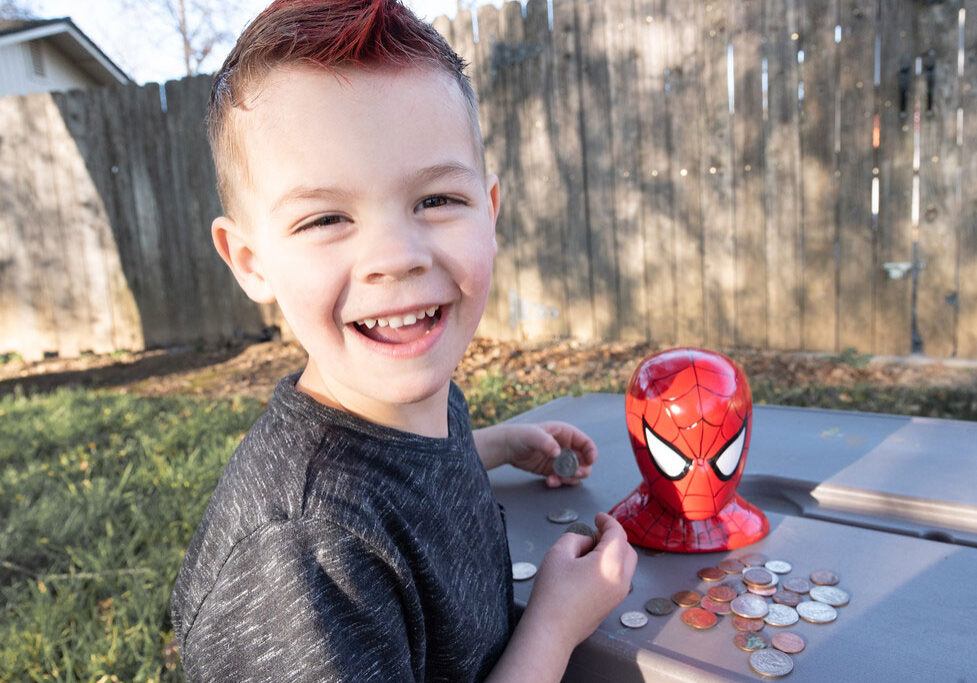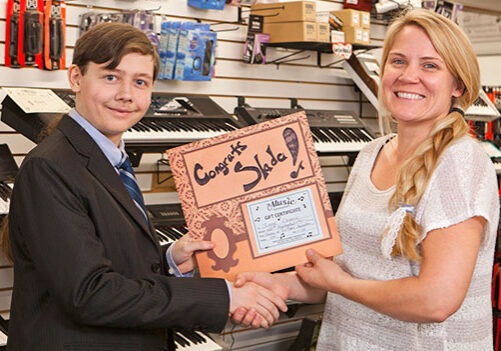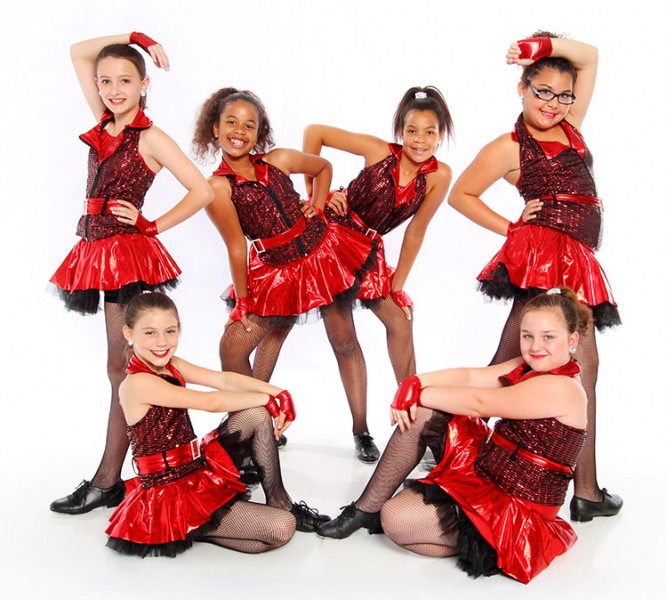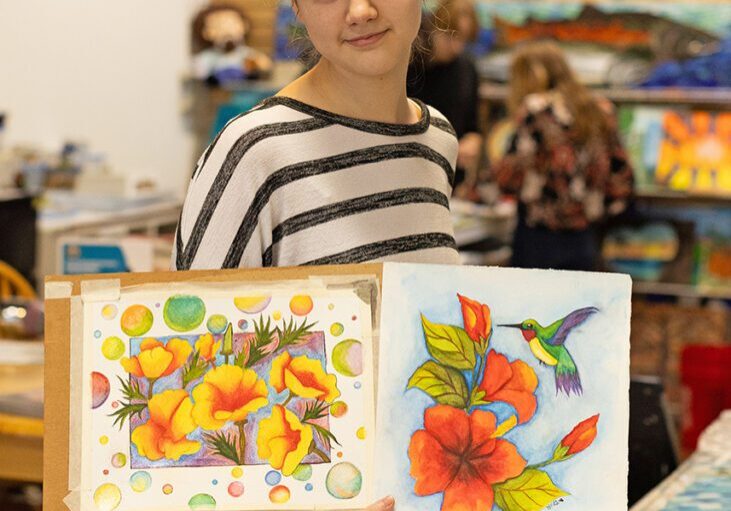Don’t be fooled by glittery costumes and false eyelashes – competitive dancers are athletes who deserve to be taken just as seriously as participants in any other sport. Dance at any level offers multiple benefits and can teach practical skills that carry over into everyday life.
According to the National Registry of Dance Educators, dance provides physical, intellectual, artistic, social and individual benefits to participants. When performed regularly and intensively, dance is both a sport and a multi-sensory art form that can raise your child’s self-esteem.
Unlike seasonal sports, dance practice typically runs through the school year or even year-round. Dancers tend to take foundational dance classes first, and learn new forms of dance as their skills grow. Ballet, tap, jazz, lyrical, acrobatics and hip hop are common forms of dance offered at studios.
If you are considering dance for your child, visit local studios to find a vibe and set of values that are a good match with your child. Here are some of the rewards and skills gained through taking consistent dance classes:
1. Listening. In order to learn, dancers have to hear and absorb verbal instructions from their teachers. Verbal instruction is offered in different ways, helping students learn to pay attention at all stages of the learning process.
2. Observing. Another way dancers learn is by watching demonstrations. Dancing is a multi-sensory skill, so there are many ways to learn. Observing closely is an important part of the process.
3. Social skills and expansion. Dancers can make new friends in dance class and expand their social circles. Children who spend consistent time working on new skills together are likely to form deeper friendships.
4. Follow-through. Dance is a kinesthetic experience, so if your child has trouble concentrating, dance may be a good way to build follow-through. Children who have trouble sitting still in school may learn to concentrate better through learning and practicing dance movements, which requires considerable focus.
5. Musicality and rhythm. If you want your child to become more musical, even without playing an instrument, dance is a good choice. The measured movements kids learn in dance help them understand and adapt to other kinds of rhythms, musically and in life.
6. Strength. Dancers are stronger than you might think. In my daughter’s fifth-grade classroom, a petite veteran competitive dancer routinely beats the football players at arm wrestling. Dancers need both core and individual muscle strength to leap, turn and twist safely.
7. Flexibility. Don’t worry if your child is not necessarily flexible or agile before beginning dance. Flexibility is something that is approached incrementally as a dancer learns and grows. With consistent stretching and flexing, any student can become more limber.
8. Overall Fitness. Regular dancing increases balance, endurance, and cardiovascular health.
9. Responding to feedback. Dancers receive ongoing feedback from instructors. The onus is on them to receive constructive feedback graciously, and apply it so they can improve. This teaches responsiveness and collaboration instead of defensiveness and oversensitivity.
10. Poise. Dance can help cure the curse of klutziness. If your child frequently trips or bumps into things, poise in the studio will eventually translate into increased body awareness and motor control outside the studio as well.
11. Self-discipline. Many life situations require learning to do things to the best of our ability. Mastering a dance routine teaches dancers how to aim for a goal and reach it. Repeated over time, the ability to accomplish a goal can be applied to any task or healthy habit.
12. Self-expression. Dance styles and events are many and varied, offering something for all personalities, ages, body types and skill levels. Dancers learn to express themselves artistically through movement, agility, showmanship, poise, teamwork, and letting their personalities shine through.
13. Commitment. Dancers learn they earn dividends on what they invest in their art. Half-hearted engagement typically yields poor results. When a dancer commits consistently and fully, the payoff is great.
14. Confidence. Confidence comes from doing. It’s one thing to watch a dance production – it’s quite another to perform in one, or to master a new dance skill.
Because dance is multi-sensory, don’t be surprised if it boosts your child’s confidence in unanticipated ways.
15. Posture. Body language experts have proven that by changing our posture, we can change our feelings and attitude. Dancers practice good posture, which has both short and long-term benefits physiologically and emotionally.
16. Body awareness. No matter what size they are, dancers learn that an active, healthy body helps accomplish many objectives in life with greater ease. They also learn the benefits of eating healthy to fuel their bodies.
17. Teamwork. Dancers often literally depend on each other to lift or hold each other up, and to connect to make a whole. By working together, dancers learn to trust each other and to trust themselves in a group setting.
18. Positive attitude. “When you smile, the whole world smiles with you,” so the saying goes. Like posture, tests have shown that smiling makes you feel better overall. The dance studio is a place where students are reminded to stay centered, to relax and to smile.
19. Stress reduction. Life gets bumpy sometimes, even for kids. Children who are experiencing stress typically benefit from expressive outlets for their energy, and the consistency, focus and health benefits of dance may help counterbalance the negative effects of stressful life situations.
20. Respect. Most dance instructors are trained in the art, and studios expect kids to be respectful towards their teachers. They also learn to be respectful toward others in classes and rehearsals. Dancers who treat others honorably tend to gain much from the process, just like in real life.
21. Community. Dancers are not just part of a class, they are part of an extended community. A studio is composed of the owner, instructors, students, and parents and families of the students. Dancers learn they can be a significant part of the whole and still shine as individuals. They can look to others for good examples and also set a good example.
Most importantly, dancers learn to work hard, do their best and still have fun.
Posted in: Art & Music
Comment Policy: All viewpoints are welcome, but comments should remain relevant. Personal attacks, profanity, and aggressive behavior are not allowed. No spam, advertising, or promoting of products/services. Please, only use your real name and limit the amount of links submitted in your comment.
Comments
Trackbacks
-
[…] Give Dance A Chance, 21 Reasons To Try Consistent Classes (also featured in North State Parent this month) […]
Leave a Reply
You Might Also Like...
Krysta Shaw-Stearns & The Red Bluff Performing Arts Centre: A Center for Expression, For Everyone
Everyone deserves a creative outlet and a form of expression that brings people together. Whether dancing and performing are passions or just hobbies, the Red Bluff Performing Arts Centre is […]

Raising Creative Kids On A Budget
In our increasingly structured and media-saturated society, kids often don’t get the time or space to be creative. Many of us think of creativity as only pertaining to the arts. […]

Siskiyou County Arts Council Brings Art to County Families
Art is a lens for seeing differently Siskiyou County Arts Council (SCAC) President Bridgétt Rangel Rexford says the organization defines art as “anything made by a maker. It could be […]

2013 June Musical Contest Winner: Slade Patrick Darrin of Paradise
North State Parent and The Music Connection of Chico and Redding congratulate Slade Patrick Darrin of Paradise, winner of our 2nd annual teen music essay contest and $400 gift certificate […]





Michele Thornton says
YES YES YES. Dance is not the dog-eat-dog bitchfest that some reality shows portray. It’s hard work, and teaches children (mostly girls) essential skills just as other team sports do. Thank you for seeing the true benefits of dance!
Christina Katz says
Aw, shucks. Thanks, Michele. It’s true. We watch the show “Dance Moms” once in a while and it’s truly amazing how absurd the show is. Clearly those folks are being paid to behave in as outrageous a manner as possible. Which is too bad, because there are so many positive dance teachers out there, who act as genuinely good role models for girls.
Molly Kaleikilo says
I love this list of great reasons to dance. I would also love to have a link to your article on my innovativedance facebook page.
Molly
The Writer Mama says
Molly, I never saw your comment here before. Feel free to post a link to the article wherever you like! 🙂
Derek Dewitt says
My son has shown an interest in dance lately so I am thinking about enrolling him in some classes this year. I like your point about how dance can also help children expand their social skills. I want him to make new friends and find his passion so this sounds like a great way to do that.